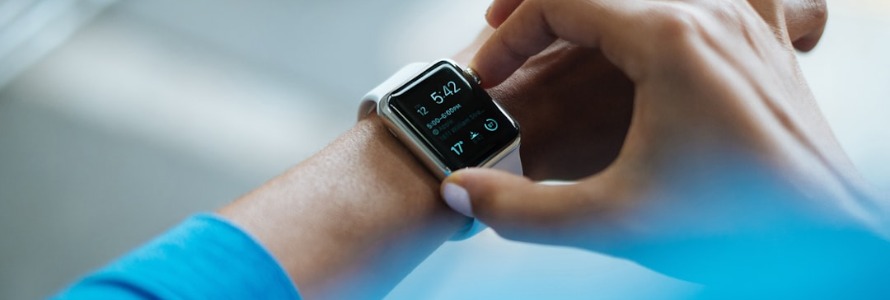
Body language is a powerful form of non-verbal communication that can reveal a lot about a person’s thoughts, feelings, and intentions. Being able to read and interpret body language effectively can enhance your interpersonal skills, improve your relationships, and give you an edge in various social and professional situations. In this guide, I’ll share my personal experiences and insights on how to read and interpret body language.
Step 1: Understand the Basics of Body Language
Body language includes facial expressions, gestures, posture, and other physical behaviors that convey messages without words. It’s important to recognize that body language can vary based on cultural, social, and individual differences. Here are some basic elements of body language to consider:
- Facial Expressions: Emotions such as happiness, sadness, anger, and surprise are often clearly reflected in a person’s facial expressions.
- Gestures: Hand movements, such as waving, pointing, and thumbs up, can convey specific messages or emotions.
- Posture: The way a person stands or sits can indicate their level of confidence, openness, or defensiveness.
- Eye Contact: Maintaining or avoiding eye contact can reveal a person’s level of interest, confidence, or discomfort.
Step 2: Pay Attention to Facial Expressions
Facial expressions are one of the most direct ways to gauge someone’s emotions. Here are some common facial expressions and their interpretations:
- Smiling: A genuine smile that reaches the eyes typically indicates happiness, friendliness, and approachability.
- Frowning: A furrowed brow or downturned mouth often signifies sadness, concern, or displeasure.
- Raised Eyebrows: Raising the eyebrows can indicate surprise, curiosity, or skepticism.
- Tightened Jaw: A clenched jaw may suggest tension, anger, or stress.
I always make an effort to observe facial expressions closely to better understand how someone is feeling during a conversation.
Step 3: Observe Gestures and Movements
Gestures and movements can provide additional context to a person’s words and emotions. Some common gestures and their meanings include:
- Crossed Arms: This can signal defensiveness, resistance, or discomfort.
- Open Palms: Showing open palms often indicates honesty, openness, and a willingness to communicate.
- Touching the Face: Frequent face-touching can suggest nervousness, insecurity, or even deception.
- Handshakes: A firm handshake usually conveys confidence, while a limp handshake may indicate uncertainty or lack of enthusiasm.
By paying attention to these gestures, I can gain a deeper understanding of a person’s feelings and intentions.
Step 4: Analyze Posture and Stance
A person’s posture and stance can reveal a lot about their confidence and attitude. Here are some key points to consider:
- Confident Posture: Standing or sitting up straight with shoulders back and head held high typically indicates confidence and assertiveness.
- Closed Posture: Slouching, crossing arms or legs, and turning away from others can suggest insecurity, defensiveness, or discomfort.
- Leaning Forward: Leaning slightly forward can indicate interest, engagement, and attentiveness.
- Leaning Back: Leaning backward may suggest relaxation, disinterest, or even skepticism.
I always take note of a person’s posture to assess their level of comfort and engagement in a conversation.

Step 5: Monitor Eye Contact
Eye contact is a crucial aspect of body language that can convey a range of emotions and intentions. Here are some observations to keep in mind:
- Direct Eye Contact: Maintaining direct eye contact often indicates confidence, interest, and sincerity.
- Avoiding Eye Contact: Avoiding eye contact can suggest discomfort, nervousness, or even deceit.
- Blinking: Frequent blinking may indicate nervousness, while slow blinking can signal relaxation or boredom.
- Pupil Dilation: Dilated pupils can suggest attraction, interest, or arousal, while constricted pupils may indicate discomfort or disinterest.
I make a conscious effort to monitor eye contact to better understand a person’s level of engagement and emotional state.
Step 6: Consider Cultural Differences
It’s important to recognize that body language can vary significantly across different cultures. What may be considered a positive gesture in one culture could be interpreted negatively in another. For example, direct eye contact is seen as a sign of confidence in some Western cultures, while it may be considered rude or confrontational in certain Asian cultures.
I always take cultural differences into account when interpreting body language to ensure accurate and respectful communication.
Step 7: Look for Clusters of Signals
Relying on a single gesture or expression to interpret someone’s body language can be misleading. Instead, I look for clusters of signals that collectively convey a consistent message. For example, if someone is crossing their arms, frowning, and avoiding eye contact, it’s more likely that they are feeling defensive or uncomfortable.
By considering multiple signals together, I can make more accurate interpretations of a person’s body language.
Step 8: Trust Your Intuition
While it’s important to be aware of specific body language cues, trusting your intuition can also play a significant role in interpreting non-verbal signals. Our subconscious mind often picks up on subtle cues that we may not be consciously aware of. If something feels off or inconsistent in a person’s body language, I trust my intuition and pay closer attention to their behavior.
Step 9: Practice and Observe
Reading and interpreting body language is a skill that improves with practice. I make a habit of observing people’s body language in various settings, such as meetings, social gatherings, and public spaces. By practicing regularly, I become more attuned to non-verbal cues and develop a deeper understanding of human behavior.
Step 10: Continuously Learn and Improve
The study of body language is an ongoing journey of learning and improvement. I regularly seek out resources, such as books, articles, and workshops, to enhance my knowledge and skills. By continuously learning and staying curious, I can become more proficient in reading and interpreting body language.
Real-Life Examples
Allow me to share a couple of real-life examples to illustrate these principles in action.
Example 1: Reading Body Language in a Job Interview
During a job interview, I noticed that the candidate maintained direct eye contact, smiled genuinely, and had an open posture with relaxed shoulders. These positive body language cues indicated confidence, honesty, and enthusiasm. However, when asked about a challenging situation, the candidate began touching their face and avoiding eye contact, suggesting discomfort or nervousness. By observing these cues, I gained valuable insights into the candidate’s confidence and honesty.
Example 2: Interpreting Body Language in a Negotiation
In a business negotiation, I observed that the other party was leaning forward, maintaining eye contact, and nodding occasionally. These cues suggested that they were engaged and interested in the discussion. However, when discussing certain terms, they crossed their arms and shifted in their seat, indicating discomfort or resistance. By paying attention to these signals, I was able to address their concerns and adjust my approach to reach a mutually beneficial agreement.
Conclusion
Mastering the art of reading and interpreting body language can significantly enhance your interpersonal skills and improve your relationships. By understanding the basics of body language, paying attention to facial expressions, gestures, posture, and eye contact, considering cultural differences, looking for clusters of signals, trusting your intuition, practicing regularly, and continuously learning, you can become more proficient in interpreting non-verbal cues.
I hope this guide provides valuable insights into the art of body language. If you have any personal experiences or tips to share, I’d love to hear them! Let’s continue to learn and grow together.


